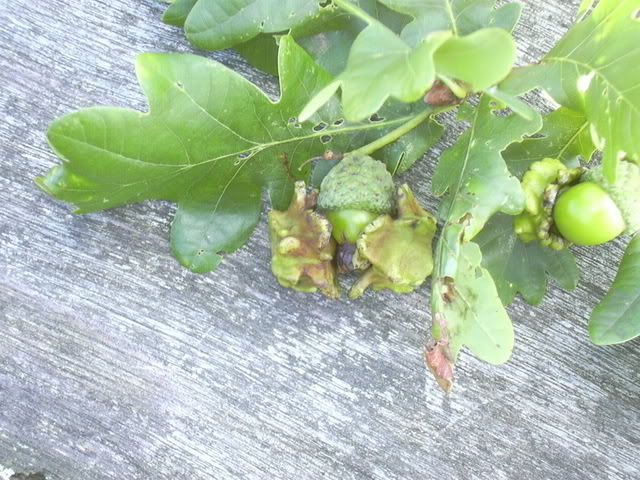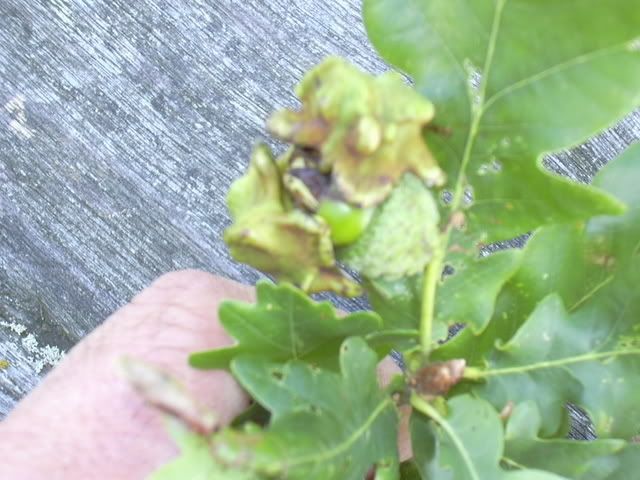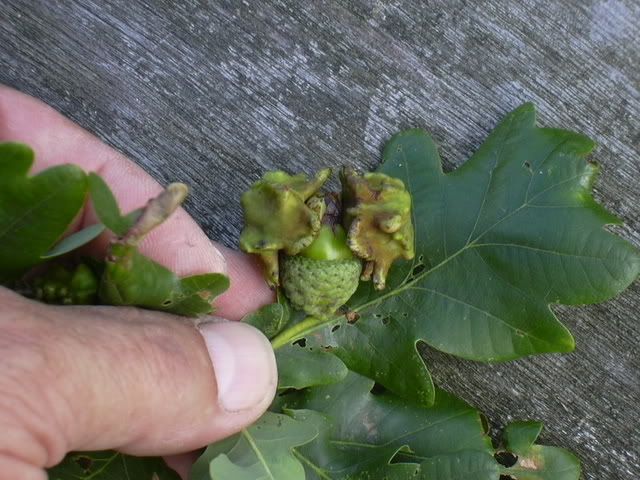Went for a walk this morning and found a couple of oak trees and most of the acorns on them have some deformities. These are growing out of the acorns themselves and I was wondering what the causes might be. Any comments much appreciated.












I honestly have no idea. There seems to be so many ways of making dyes that I was just narrowing down the colours that I liked, then was planning on collaring Toddy at a meet for info on the select few.How are they used, then? Do you have to wait until they are "ripe" and what can you dye with them, ie would it work on leather for example?

We have two native species of oak in this country the sessile oak and the pedunculate oak. Sessile means having no stalk and pedunculate means having a peduncle or stalk. In the case of oak trees, this means the sessile oak has acorns stuck to the twig with no stalk. This oak tree is also known as the Irish oak and grows on acidic soils in places like Killarney and Glenveagh. It is perfectly happy and has no nasty extuberances emanating from its acorns.
The pedunculate oak has its acorns out on stalks. It is known as the English oak and can grow on heavy lowland soils and put up with flooding. Such an oak occurs in places like Charleville in Offaly and in Abbeyleix. It is quite often planted as a parkland tree. This is the species that is shown here with its stalked, knobby acorns one of which is sporting a knopper gall. This gall was caused by a wasp-type insect with the name Andriscus quercusalicis, which laid an egg in the forming acorn. The reaction of the egg with the growing acorn tissue caused it to change its growth form and produce this invading mass of cells, which are in fact food for the growing baby wasp.
This gall wasp has the most amazing life cycle. It has alternating sexual and asexual generations and it needs two oak species the native pedunculate oak and the introduced evergreen Turkey oak in order to complete its life cycle. The female wasp first lays her eggs on the roots of the Turkey oak in spring. These grow into sexual male and female wasps, which mate in a normal manner (for wasps that is). The mated female then goes and lays her eggs on the developing acorn and the ensuing growing larva causes the disfigurement that we see in autumn on the acorns the knopper gall. The creatures that emerge from these are all female. They overwinter like this and in spring without ever laying eyes (or anything else) on a male go on to lay eggs on the roots of the Turkey oak.
So before Turkey oaks were ever introduced to this country we had no knopper galls. And while every acorn is not so afflicted, you know what to do if you are worried about the survival of your native pedunculate oaks. Get rid of the Turkey oaks in the vicinity and there will be no breeding habitat for those weird, asexual female gall wasps.
